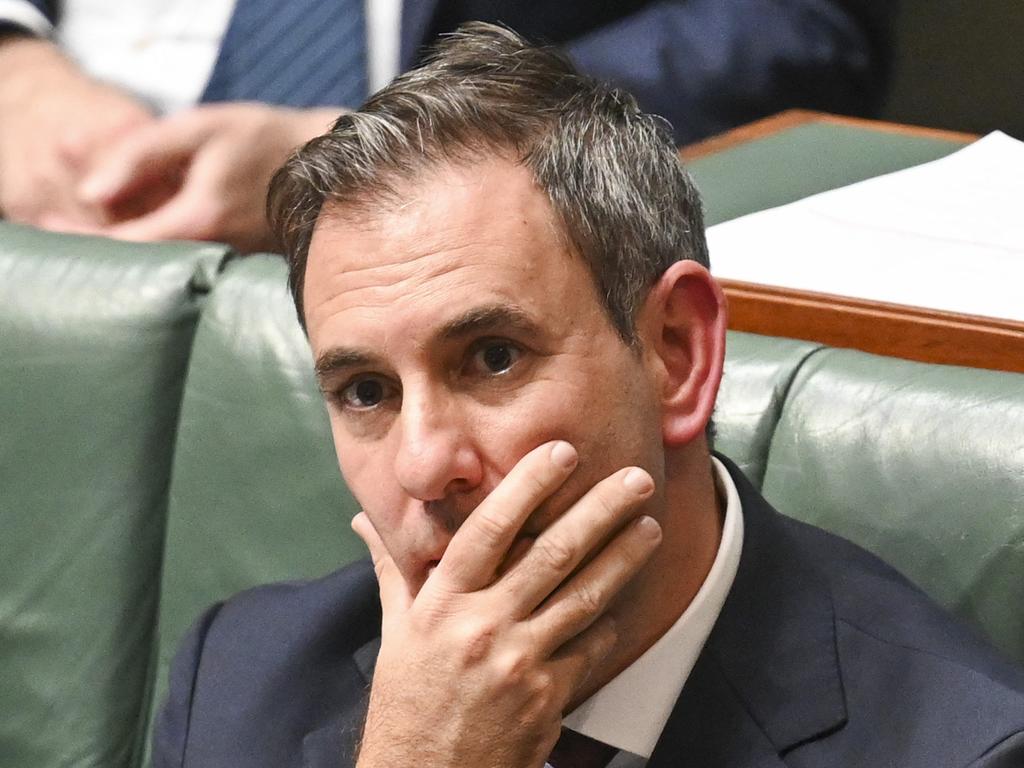Government jobs dominate employment growth
Nearly three in four jobs created in the six months to February have been in government-dominated industries such as health care, education and public administration.

Nearly three in four jobs created in the six months to February have been in government-dominated industries such as healthcare, education and public administration, underpinning the nation’s surprisingly resilient labour market but dragging on productivity growth.
As Labor spruiks its record of creating nearly 820,000 jobs since taking office a little over two years ago, the analysis from ANZ highlights the growing reliance on taxpayer-funded employment to maintain low levels of unemployment, especially as the economy has slowed to a near stall in the past six months.
While employment gains in recent months have become increasingly driven by taxpayer-funded roles, these three sectors accounted for 42 per cent of job creation over the two years to February, despite representing 31 per cent of total employment.
The growing share of public employees in the workforce has been a phenomenon stretching back 15 years, when jobs in the three government-dominated sectors accounted for 24 per cent of total employment, according to quarterly official figures.
Economists and policymakers have decried the stagnant productivity growth since the pandemic ended but that flat overall picture obscured the fact that output per hour worked in the private sector over that period has lifted by 2.8 per cent, as revealed in last week’s national accounts, suggesting that hard-to-measure productivity in the public sector has gone backwards and that more needs to be done to improve output per worker among government employees.
Labour force figures released this Thursday are the next major test for the Reserve Bank board, which is attempting to engineer an economic slowdown that brings inflation back under control over the coming two years while keeping most of the employment gains achieved in the aftermath of Covid-19.
Economists predict another strong month of employment growth in May, enough to push the key jobless rate back down to 4 per cent, after an unexpected lift from 3.9 per cent to 4.1 per cent in April.
The RBA predicts the jobless measure will rise only marginally to 4.2 per cent by the end of this year, and peak at 4.3 per cent by mid-2025, by which time underlying inflation should have gone from 4 per cent to 3.1 per cent.
The labour market has proved remarkably resilient to the economic drag from 13 interest rate hikes and high inflation, which have flattened spending growth and smashed household budgets.
ANZ head of Australian economics Adam Boyton believes jobs growth in the public sector partly explains the stubbornly low unemployment rate, and that as a result, the RBA’s eventual rate cutting cycle will not need to be as deep.
Ballooning demand for workers in healthcare, education and public administration comes as private sector employers are finding it ever more difficult to find suitable workers in a tight labour market.
A survey conducted by peak industry body Ai Group, which represents more than 60,000 businesses employing more than one million people, found that nearly eight in 10 businesses were struggling to find or train technicians and trade workers.
That was up from 71 per cent of employers two years ago, and double the 40 per cent share in 2020.
Ai Group chief executive Innes Willox said “not being able to find the right people at the right time limits the ability of businesses to meet demand, grow and innovate and this has negative consequences for our economy”.
Among the technician and trades jobs in short supply were boilermakers, welders, plumbers and CNC machinists – who operate and program computer-controlled machine tools to make precision parts. Among professionals, there was high demand for engineers of all types, as well as project managers and data analysts, the survey revealed.






To join the conversation, please log in. Don't have an account? Register
Join the conversation, you are commenting as Logout